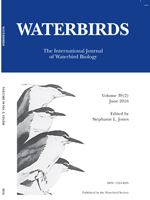The biology and behavior of Agami Herons (Agamia agami) are not well known. This paper describes the species' foraging, nesting, plumage, soft-part coloration, courtship, and disturbance response studied during a 28-hour 8-day study period, 11–18 May 2015, in Costa Rica. Agami Herons forage by standing on perches and walking or wading slowly, capturing small prey using a slow neck extension followed by a grasp. Courtship emphasizes its spectacular, short-lived silver crest and other similarly distinctive plumage and soft-part features. Thirteen courtship behaviors described are used by both sexes. The female, rather than the male, retains intense red lores during pair formation. Only two nest change-overs and no chick feeding were observed, which, along with evidence of distant foraging, suggest a nesting strategy accommodating long intervals between chick provisioning. Agami Herons respond to disturbance with a rattling call and by walking away into vegetative cover. This observed sensitivity to disturbance reinforces a conservation strategy for the species emphasizing protection of regionally important nesting colonies and their foraging habitat.
How to translate text using browser tools
1 June 2016
Behavior of the Agami Heron (Agamia agami)
James A. Kushlan,
Kirsten Hines

Waterbirds
Vol. 39 • No. 2
June 2016
Vol. 39 • No. 2
June 2016
Agami Herons
Agamia agami
breeding behavior
conservation
Costa Rica
courtship
Displays




